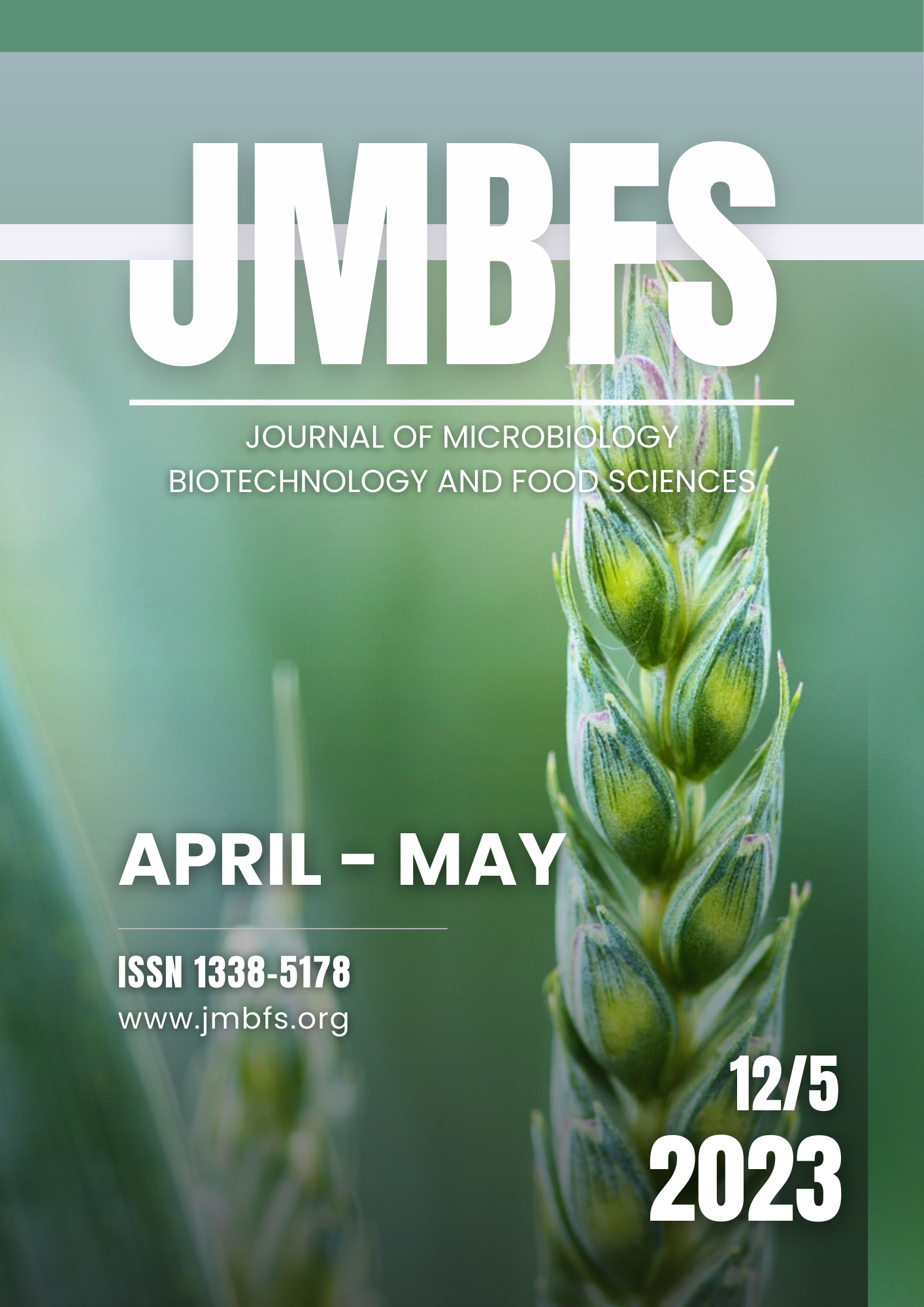POTENTIAL OF LACTIC ACID BACTERIA FROM MOROCCAN GOAT’S MILK FOR STARTER CULTURE DEVELOPMENT
DOI:
https://doi.org/10.55251/jmbfs.9463Keywords:
goat’s milk, microbiological counts, lactic acid bacteria, physical and chemical composition, technological propertiesAbstract
Goat milk, a highly nutritious product is widely used in cheese making. In order to properly select suitable milk samples for production, fifty-five samples of raw goat’s milk were collected from eight farms in the North-West of Morocco to analyze their counts of various mesophilic bacteria and determining the physicochemical characteristics during different seasons of the year. Lactic acid bacteria (LAB) were isolated, identified, and screened for several technological properties. Overall mean values for mesophilic aerobic flora were above 7.10 log cfu/mL in spring and 5.80 log cfu/mL during winter with a statistically significant difference found between all the microorganisms except for coagulase-positive staphylococci. The physical and chemical composition tests showed higher values for fat (4.9±1.01%), dry matter (13.98±0.95%), ash (1.3±0.12%), lactose (3.1±0.65 g/L), and protein (4.6±1.03 g/L) during the winter season which could be of great interest for cheese production. fatty acids (FA) composition mainly consisted of saturated fatty acids (SFA) in both seasons. Lactococci isolates were the most acidifying (pH6h=4.35–pH24h=4.08) while Lactobacillus paracasei produced the highest proteolytic activity (66.93±2.63 mgTyr.L-1) and diacetyl-acetoin (54.83±0.46 mg diacetyl/L). None of the tested isolates were lipolytic, however, several lactobacilli and lactococci exhibited a high salt tolerance and exopolysaccharide (EPS) production. Lactobacillus plantarum exhibited the highest lysis rate (67.34±1.76%) while the antibacterial profile ranged between 10.5±0.137 and 22.9±0.23 mm. The obtained results highlight the importance of Moroccan goat milk as a valuable component for cheese making due to its rich fat and protein contents alongside its abundance in LABs with biotechnological properties.
Downloads
Downloads
Published
How to Cite
Issue
Section
License
Copyright (c) 2022 OUIAM EL GALIOU, Hanane BAKRIM, Mostafa LAMHAMDI , ZERROUK Mounir HASSANI , Said ZANTAR , Abdelhay ARAKRAK , Mohammed BAKKALI , Amin LAGLAOUI

This work is licensed under a Creative Commons Attribution 4.0 International License.
All papers published in the Journal of Microbiology, Biotechnology and Food Sciences are published under a CC-BY licence (CC-BY 4.0). Published materials can be shared (copy and redistribute the material in any medium or format) and adapted (remix, transform, and build upon the material for any purpose, even commercially) with specifying the author(s).





